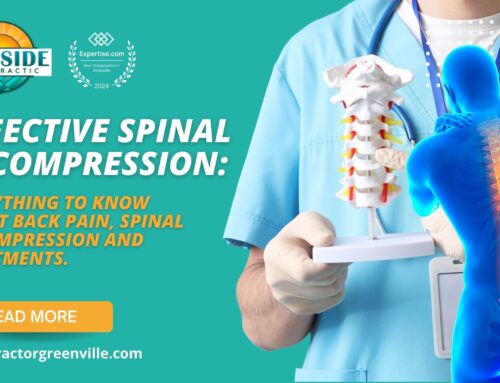 What is whiplash?
What is whiplash?
“Whiplash” describes what happens when the neck is suddenly and forcefully jerked, like in a car accident. The jerking motion happens quickly, forcing the neck beyond its normal limits. The jerking is so fast that our muscles don’t have time to resist. This jerking motion results in muscle, tendon, and ligament over-stretching and sometimes even tearing. Symptoms of a whiplash can include stiff and painful neck movements, weakness, headaches, sometimes dizziness, ear noises, TMJ or jaw pain, and a head that “feels too heavy” making it challenging to hold up.
When do Symptoms Occur?
Pain or numbness can be noticed immediately, however it is not uncommon for symptoms to show up much later, days, weeks or even months later. The reasons for this delay are numerous, but the problems should not be ignored just because they did not reveal themselves right away.
Is Whiplash Permanent?
In many cases the damage is reversible if the patient receives proper treatment in time. Treatment must address muscle damage, ligament damage and even joint alignment. Unfortunately, some cases have permanent damage from torn or bulging discs, torn ligaments and/or muscles. These cases ultimately may not respond to conservative care and may require surgery.
If There is Little or No Damage to my Car, Can I Still Have Whiplash?
Yes. Bumpers in cars are made to rebound or bounce back at low speeds. This protects the car but can cause more damage to the occupants, especially with a rear end impact. A higher velocity impact causes cars to “crumple” which absorbs some of the shock. Research has shown that 36% of vehicle occupants sustained an injury in collisions with speeds less than 10 miles per hour. (Foret-Bruno et.al)
Whiplash Treatments
Depending on the amount and degree of damage to the neck soft tissues (the muscles, tendons, ligaments, and disks of the neck), you may need several weeks of rest, or you may be able to resume normal activities fairly quickly. If there are no fractures, dislocations or other injuries resulting in an unstable cervical spine (neck), studies have shown that rest and a soft collar are actually harmful when compared to early return to activity and exercises. Chiropractic treatment, which essentially exercises the stiff joints of the neck, has been shown to speed recovery when performed sooner rather than later after a whiplash injury.
What if I Need X-Rays, an MRI or Referral to a Specialist?
X-Rays are available in our office and are sent to a radiologist if indicated. We will send out for MRIs or other special studies when clinically appropriate. We maintain good relationships with orthopedic and neurosurgical doctors in Greenville and will always refer you to the proper specialist when conservative care does not resolve your problem within a 4 to 8 week time frame.
We can classify whiplash injuries into 4 categories:
- Pain with no significant abnormal clinical findings
- Pain with mild clinical findings and a range of motion loss
- Pain with nerve injury (resulting in radiating arm pain/numbness/tingling)
- Pain associated with fracture and/or dislocation
Those suffering with category 1 or 2 injuries should minimize rest, minimize collar use, proceed with life’s activities and not be afraid to do the things they would like to do. More aggressive physical therapy and using chiropractic adjustments as soon as possible is an effective strategy for the first two categories of injury.
Category 4 (fractures and dislocations) require medical treatment. Category 3 injuries demand careful monitoring by your chiropractor because neurological problems like arm pain and numbness, and muscle strength loss must be watched to be sure of improvement during the healing process. Otherwise a referral to an appropriate medical specialist may be necessary.
Ice is helpful with all four categories of injury. Exercise training is also important and can be started sooner in the first two categories of injury.
Self-help Strategies for Whiplash
What can you do if you suffer a whiplash injury? The first self-help strategy is to use ice. Using ice is much better than using heat because ice reduces swelling and pain while heat can increase swelling. The increased swelling results from the increase in blood flow to an already swollen area. The heat may feel good while it is on the injury, but most patients report that the pain returns quickly and may even increase. Ice and heat can be alternated but ice should be emphasized by using ice for 10 minutes, heat 5 minutes and repeating, always starting and ending with ice. One session usually equals 40 minutes (ice/heat/ice/heat/ice works out to 10+5+10+5+10 = 40 minutes), and several sessions can be repeated each day. The old adage of “ice for the first 24 hours followed by heat” does NOT apply here as ice or “contrast therapy” of ice/heat/ice/heat/ice can be performed for as long as there is pain or for several weeks longer. The good news is that you will never hurt yourself by using ice, but you can make it hurt worse by using heat too soon so, when in doubt, use ice!
The next, very important self-help strategy is to use exercises to stretch and strengthen the neck and upper back region. The “general rule” of exercise is slow repetitions staying within “reasonable” boundaries of pain. That is, a good stretch type of pain is encouraged while avoiding sharp pain. We will discuss several very practical neck stretches and strengthening exercises in future posts.
We realize that you have a choice in where you go for healthcare services. If you, a friend or family member requires care for “whiplash” the common term used for this injury, chiropractic care is a logical first choice and we would be honored to offer our services to you! Call us at 864-292-6777 for a complimentary consultation to discuss your injury.

 What is whiplash?
What is whiplash?